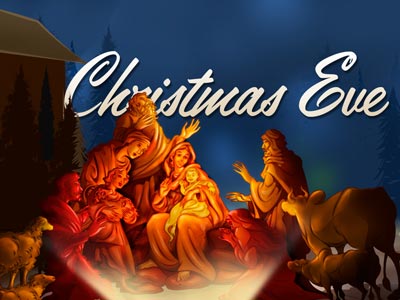-
The Dawn Treader: The Voyage Series
Contributed by Mike Parry on Nov 28, 2017 (message contributor)
Summary: The Voyage is a metaphor for the Christian life...using C. S. Lewis classic "The Voyage of the Dawn Treader" we discover that the Christian life leads to adventure, transformation, and rescue.
“The Voyage”
Narnia: Lessons from the Dawn Treader
FCC – November 28, 2010
Introduction: C. S. Lewis’ masterpiece, The Voyage of the Dawn Treader comes to the big screen the weekend of December 10. C. S. Lewis is considered one of the greatest Christian thinkers of our century and wrote the Narnia fantasy series that has sold more than 100 million books in 29 different languages. The Chronicles of Narnia is a 7 book series that follows the adventure of some English children who discover another world—the magical land of Narnia. I’m asking you to indulge me for the next two weeks, as we will be sharing some lessons from this classic allegory by Lewis. On December 12, we will start a long series on Matthew.
The Dawn Treader is the third book from “The Chronicles of Narnia” to be made into a movie. Lord willing we are renting a theater on December 11 to watch the movie as a church. In 2005, “The Lion, the Witch, and the Wardrobe” came out and I preached three sermons based on that book and FCC went to the movie! In this book we are introduced to Aslan the great Lion who represents Jesus. The children Peter, Susan, Edmund and Lucy discover Narnia through a wardrobe. They discover a land filled with talking animals that is under the White Witch’s spell where it is always winter and never Christmas. The redemption of Narnia comes through the death of Aslan, and victory through His resurrection.
In 2008, Prince Caspian came to the big screen. Prince Caspian takes us back to Narnia...the same four children return. It’s a year later for them…but its 1300 hundred years later for Narnia. They find the ruins of their castle, Cair Paravel, and a world that shuns the “old stories” of Aslan. It’s up to Caspian and the children to fight to restore the Kingdom of Aslan to its previous glory.
Why did Lewis write the Narnia series? He tells us on the last page of the Dawn Treader as the great lion Aslan dialogues with the children as they are preparing to leave Narnia back to our world. Lucy is sad and begins by saying,
“’It isn’t Narnia, you know,’ sobbed Lucy, ‘It’s you. We shan’t meet you there. And how can we live, never meeting you?’
‘But you shall meet me, dear one,’ said Aslan.
‘Are—are you there too, Sir?’ said Edmund.
‘I am,’ said Aslan, ‘But there I have another name. You must learn to know me by that name. This was the very reason why you were brought to Narnia, that by knowing me here for a little, you may know me better there.’”
Lewis wrote the Narnia series to stretch our imagination and that we might know Jesus better. It is for this reason that I get excited about a movie…and will take a couple of weeks to interpret this classic allegory that is coming to the big screen. This morning’s message is simply entitled, “The Voyage.” In the voyage of the Christian life we find at least three things…first we find…
1. Adventure. Devin Brown wrote a book entitled, Inside the Voyage of the Dawn Treader. In his introduction he wrote this, “Sometime around November 1949…completed a remarkable story about the crew of a small sailing ship and their two-part adventure: to find seven exiled lords and then to sail to the end of the world.” C. S. Lewis would write (Collected Letters, Vol. 3, 1245) that his main focus in writing the Dawn Treader was “the spiritual life”… as experienced by the crew. Our main characters are Aslan--the lion and Christ figure, King Edmund and Queen Lucy returning from the first two stories; Eustace, a new tag-along from our world, Prince Caspian, and Reepicheep, the noble mouse.
Devin Brown writes that there seems to be a pattern of adventure where first, ‘adventures can and typically begin in unlikely places.’ In The Lion, the Witch, and the Wardrobe, the children entered Narnia from our world by a wardrobe. In Prince Caspian, they enter Narnia by a train station. In The Dawn Treader, they enter through a picture on Lucy’s wall. The adventure seems to begin in unlikely places with a providential call from Aslan.
Secondly, ‘negative circumstances—big and small—may be more likely to lead to great adventures and personal growth than positive ones.’ In the first movie, the backdrop was World War II when the children are transported to Narnia. In The Dawn Treader, Edmund and Lucy have to stay with their dreadful cousin Eustace. It seems Lewis’ wants us to understand that we were made for more than a drab, negative existence, but that we were born for adventure.
Lastly, adventures involved leaving the known for the unknown. We are told in the Dawn Treader that ‘the fullest preparations’ for the crew to ‘leave all known lands and seas behind them’ were being made. Reepicheep declares that this is when their ‘real adventures’ begin. Adventure begins when we leave behind the known and set sail for the unknown.

 Sermon Central
Sermon Central



